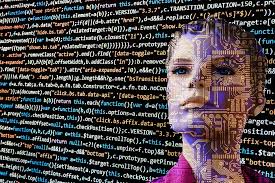FUTURE OF LEGAL TECHNOLOGY AND THE WORK OF LAW FIRMS

Kim (Knowledge, intelligence, meaning) is an artificial intelligence solution, developed by Riverview law, which won the most client-facing technology award and the innovation in Technology & Data Analytics award in 2016. Kim is developed with groundbreaking features that redefined the world of work, making the technology adapt to the user rather than the other way round. Law practitioners with no basic computer education in IT programming can simply create and automate their own systems and processes which reflect their primary work environment as well as integrate them to other interface.
Kim successfully points to a direction in the era of legal technology and artificial intelligence which others have considered blurred and still in the distant future. Surprisingly kim is not alone. Other law tech innovation has giving an insight in what direction the next generation of technology in the law work environment would likely take. Allen &Overy’sMarginMatrix tool, for example, automates legal analysis, document drafting, and compliance with new derivative rules for big institutions. Pinsent Mason’s knowledge management system is a lawyer’s lawyer which guides lawyers through the steps of a case at the same time linking them to relevant document and information.
New competition is being faced from alternative legal service providers, legal process outsourcing companies (LPOs), legal technology providers and large accounting firms on daily basis by law firms. Law firms which have a cutting-edge tech advantage are on the gaining side and have been eloquently described as being better prepared for the future. According to a Georgetown 2016 report on the state of the legal market, law firms that have responded proactively to changing client expectations by making strategic changes to their lawyer staffing, service delivery, use of technology and pricing model are outperforming their competitors in terms of financial results.
Responding to these pressures, law firms have began to pay more attention to legal innovation. Many firms have set up innovation hubs, hired innovation officers or place a partner In charge of managing innovation in the area of business the firms have particular specialty on. Others like Riverview law have partnered with universities and set a new course of limelight for their law practice. Simmons & Simmons is an incubator, investing in and supporting the development of legal technologies such as Thoughtriver which analyses contract.

Legal innovations versus confrontations;The Codex legal tech index has differentiated Legal technologies into 3 basic categories; legal information retrieval, legal infrastructure and computational law. Legal information retrieval depicts all such technology which aid in efficient legal search. Eg, e-discovery, e-law report, contract analysis, contract management systems etc. legal infrastructure covers technology which connect partakers of the legal environment. Lawyer match- making, platforms/network can fall in here. Computational law technology however poses more threat. It refers to all technology which can learn to automate legal decision making and can make the most of legal rules and give analytical opinion to lawyers, andof course the lawyer’s nightmare, to clients as well. Oliver Goodenough in his Huffington post allocated a disruptive scale of 3.0 to computational law technology, where a radical change and full replacement of the human lawyer within the legal work environment would obtain. While this is yet to be attained, it is the human lawyer nightmare.

“Technology” and “innovation” have become buzz words themselves in basically every facet of work environment. While these words on their own, suggest positive growth and development, they have incidentally been associated with pessimistic dismissal and rejection. The industrial revolution of the 18th-19th century is often cited as quintessence why the jobs of persons within their catchment are in the brink of extinction. It is also often told that when William Lee invented the stocking frame knitting machine, hoping it would relieve workers of hand knitting, and gleefully went to London for queen Elizabeth 1 to see his machine and thereafter grant him patent, he was shocked when the queen refused the grant saying “thou aimest high Master Lee. Consider thou, what the invention will do to my poor subject. It would assuredly bring to them ruin by depriving them of employment, thus making them beggars” A similar conviction is held by employees in the legal environment. Paralegals, contract, and patent lawyers who perform manual and routine jobs no doubts are the endangered species in law firms. Men and women who fail to augment their skills and master the art of premium delivery would obviously lose their jobs to robo-lawyers. Adaptation will therefore be necessary components for stakeholders in the legal work who seek to be relevant.
Full innovation departments, innovation hubs, sector-specific facilitative innovation are the future of legal technology. Law films should adopt and adapt as a key competitive tool and they would burgeon from obscurity to relevance.
References
I Acemoglu D & Robinson J.( 2012) “why nations fail, the origin of power, prosperity and poverty. Random House digital Inc.
Ii Financial times. ‘most innovative law firms 2016: innovation in technology and data analytics. www.ft.com/Roland Vogl.(2016)‘the coming of age of legal technology’
www.law.stanford.edu/2016/09/26/184188/ accessed on 29/11/2017
www.riverviewlaw.com/meet-kim-the-power-behind-riverview-laws-legal-virtual-assistant-plans/ accessed on 30/11/2017
www.9jalegal.com.ng/articles/can-technology-bring-lawyers-21st-century/ accessed on 30/11/2017.
All images are from www.pixabay.com